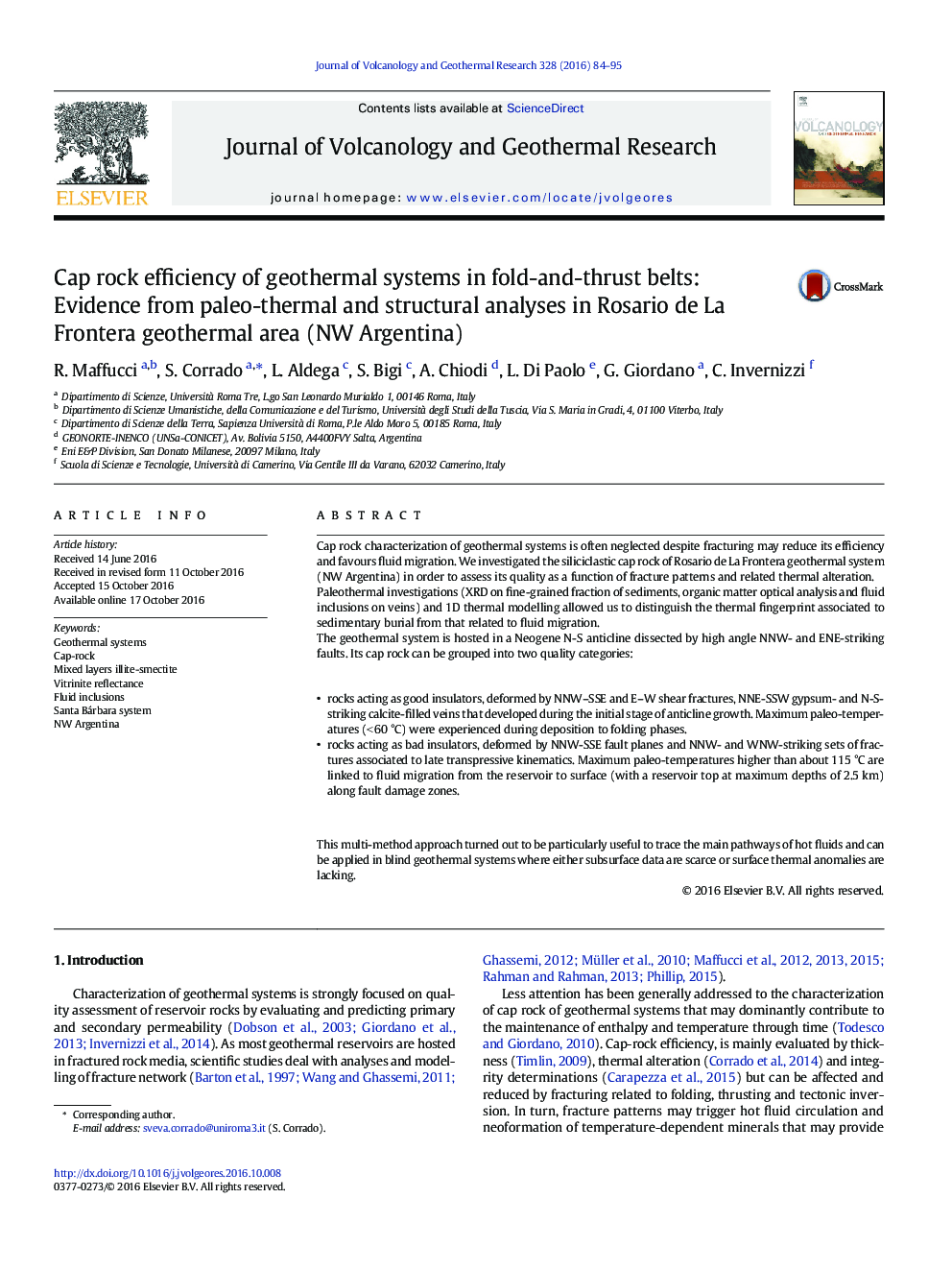| کد مقاله | کد نشریه | سال انتشار | مقاله انگلیسی | نسخه تمام متن |
|---|---|---|---|---|
| 5783909 | 1638294 | 2016 | 12 صفحه PDF | دانلود رایگان |

- We investigate the thermal state of the geothermal cap rock.
- We compare features and distribution of fractures with paleothermal indicators.
- We highlight a localized thermal alteration of the cap rock due to fluid migration.
- We define the main pathways of hot fluids.
- We demonstrate that cap rock regionally acts as good thermal insulator.
Cap rock characterization of geothermal systems is often neglected despite fracturing may reduce its efficiency and favours fluid migration. We investigated the siliciclastic cap rock of Rosario de La Frontera geothermal system (NW Argentina) in order to assess its quality as a function of fracture patterns and related thermal alteration.Paleothermal investigations (XRD on fine-grained fraction of sediments, organic matter optical analysis and fluid inclusions on veins) and 1D thermal modelling allowed us to distinguish the thermal fingerprint associated to sedimentary burial from that related to fluid migration.The geothermal system is hosted in a Neogene N-S anticline dissected by high angle NNW- and ENE-striking faults. Its cap rock can be grouped into two quality categories:
- rocks acting as good insulators, deformed by NNW-SSE and E-W shear fractures, NNE-SSW gypsum- and N-S-striking calcite-filled veins that developed during the initial stage of anticline growth. Maximum paleo-temperatures (< 60 °C) were experienced during deposition to folding phases.
- rocks acting as bad insulators, deformed by NNW-SSE fault planes and NNW- and WNW-striking sets of fractures associated to late transpressive kinematics. Maximum paleo-temperatures higher than about 115 °C are linked to fluid migration from the reservoir to surface (with a reservoir top at maximum depths of 2.5 km) along fault damage zones.This multi-method approach turned out to be particularly useful to trace the main pathways of hot fluids and can be applied in blind geothermal systems where either subsurface data are scarce or surface thermal anomalies are lacking.
Journal: Journal of Volcanology and Geothermal Research - Volume 328, 15 December 2016, Pages 84-95